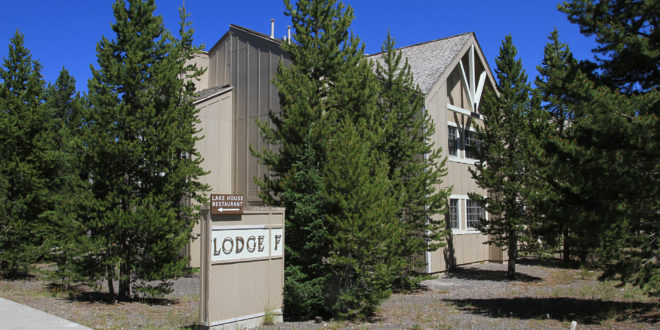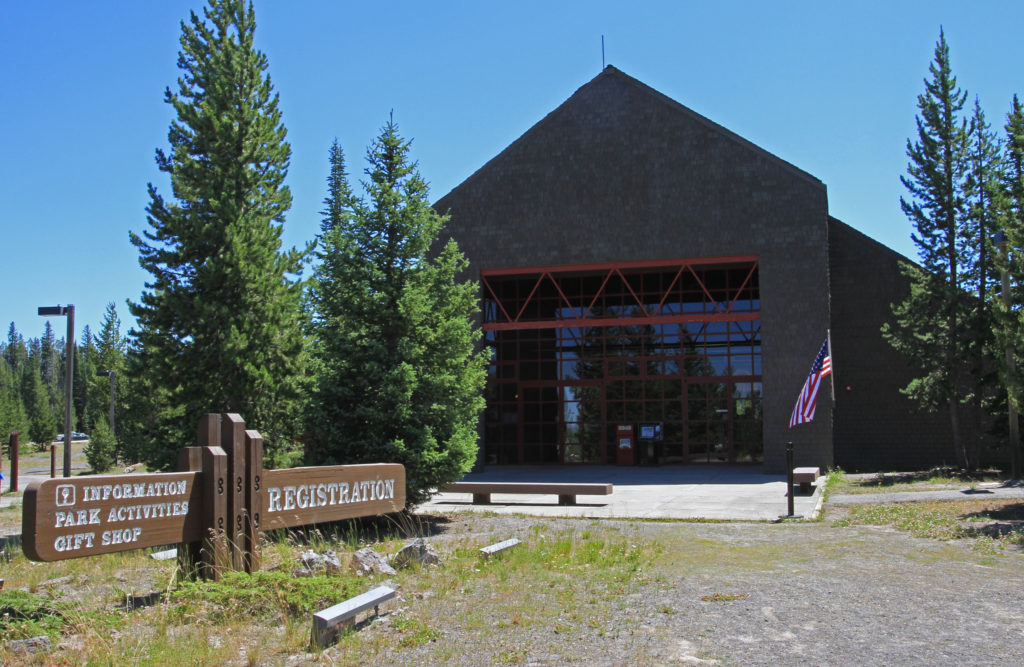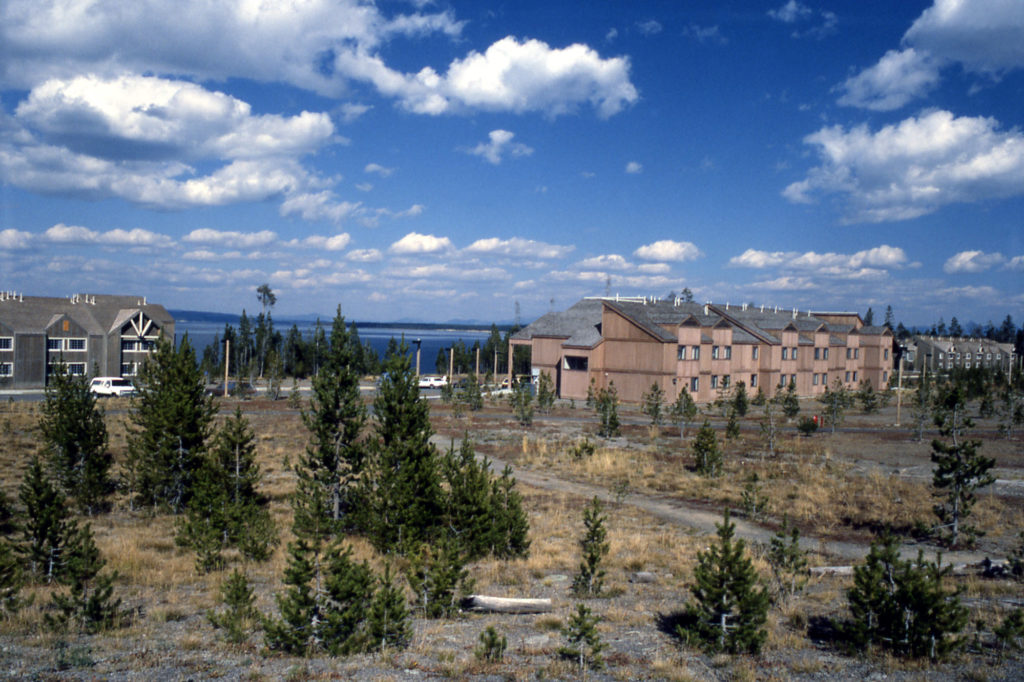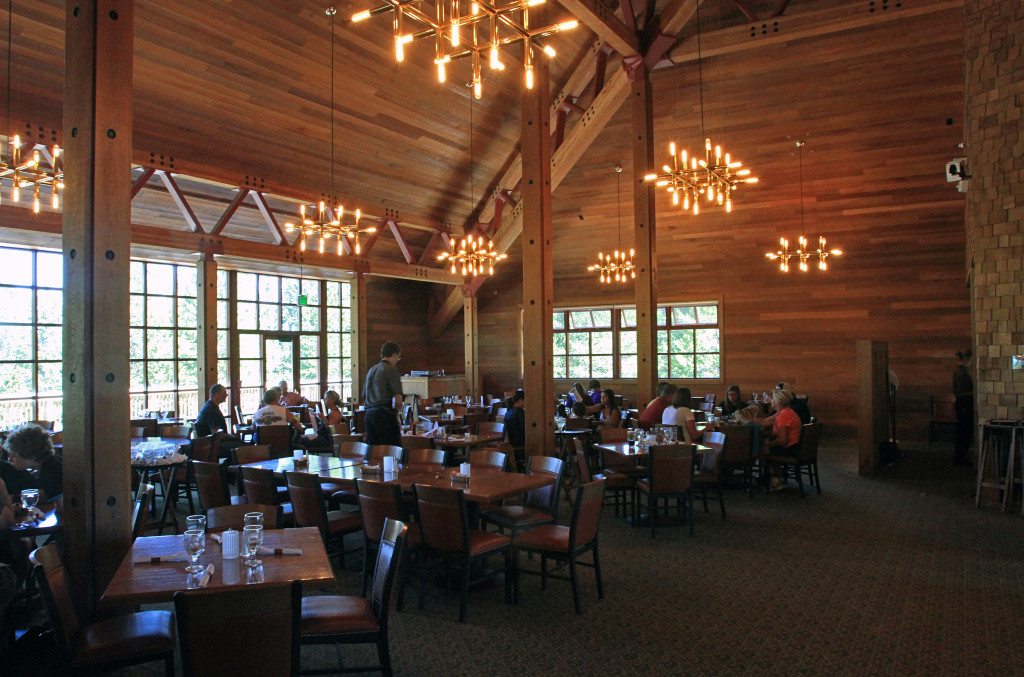Grant Village was built to accommodate more and more people coming to Yellowstone. It was also the first hotel built after Yellowstone’s centennial in 1972.
No doubt, naming the facility for President Grant seemed apt. But the naming had nothing to do with the passing of the centennial. Indeed, the construction of Grant Village itself was a conflict three decades in the making.
Part of Grant Village’s appeal is its proximity to West Thumb Geyser Basin, which has always been a popular attraction. Throughout much of the Park’s early history, West Thumb was seen as a fashionable lunch spot; people could eat at the dining tent, admire the basin, and then take a steamer over to Lake Village.
As with nearly all things Yellowstone, the car changed everything. The lunch station was closed in 1916, torn down in 1923. Ferry service stopped after 1917. There were some years of limbo, as lodging business boomed further to the north in Mammoth and Canyon Village.
According to Mary Shivers Culpin, writing in For the Benefit and Enjoyment of the People: A History of Concession Development in Yellowstone National Park 1872-1966, the Village’s impetus started in 1955, when Park Service director Conrad L. Wirth proposed a development capable of accommodating 2,500 visitors. Besides concessions, Wirth’s vision also included restaurants, gas stations, and a marina.
Quickly, however, Park Service and Park concessioner were at odds over the shape and function of the facility. While the concessioner wanted to go big (huge even—certainly bigger than any development Yellowstone had ever seen prior) the Park Service planted their foot in the “keep it limited” camp. From Culpin:
Opinion also differed on the proposed layout for Grant Village. The Yellowstone Park Company architect planned to consolidate all of the units while the National Park Service’s Western Office of Design and Construction planned for the units to be spread out. Immediately, the park announced that this difference had to be reconciled as the National Park Service could freeze the master plan. Because about $2,000,000 would be spent on roads, utilities and campgrounds, it would be difficult to alter the plans later.
Part of Grant Village was built in June 1963; the campground, picnic area, and a boat ramp. The marina followed in 1965. Throughout the years, more and more structures were built, including restaurants and a service station. The motel complex came last.
Once again, the development of Grant Village was embroiled in conflict. According to Ethan Carr, writing in Mission 66: Modernism and the National Park Dilemma, business owners in West Yellowstone, Montana bitterly protested development in Grant Village—especially after the Yellowstone Park Company was bought out by the National Park Service and a new contract-based concession system was instituted. From Carr:
By that time, however, merchants and motel owners in the rapidly growing town of West Yellowstone denounced what they perceived as government-sponsored competition. In 1981 Secretary of the Interior James Watt responded and stopped construction. Building resumed shortly thereafter, but Grant Village remained far smaller than originally planned.
Small or not, Grant Village has stayed a popular lodging location, both for its proximity to West Thumb (and Grand Teton National Park) as well as its relative cheapness, compared to hotel prices in Old Faithful and Lake. Although originally intended carry a motel feel, present-day Grant Village feels more and more like a camp complex. You especially get this feeling from the Dining Room, shown above.
Besides the Dining Room, Grant Village also has one of the more unique restaurants in Yellowstone: The Lake House, located down by the shore.
 Yellowstone Insider Your Complete Guide to America's First National Park
Yellowstone Insider Your Complete Guide to America's First National Park




You must be logged in to post a comment.